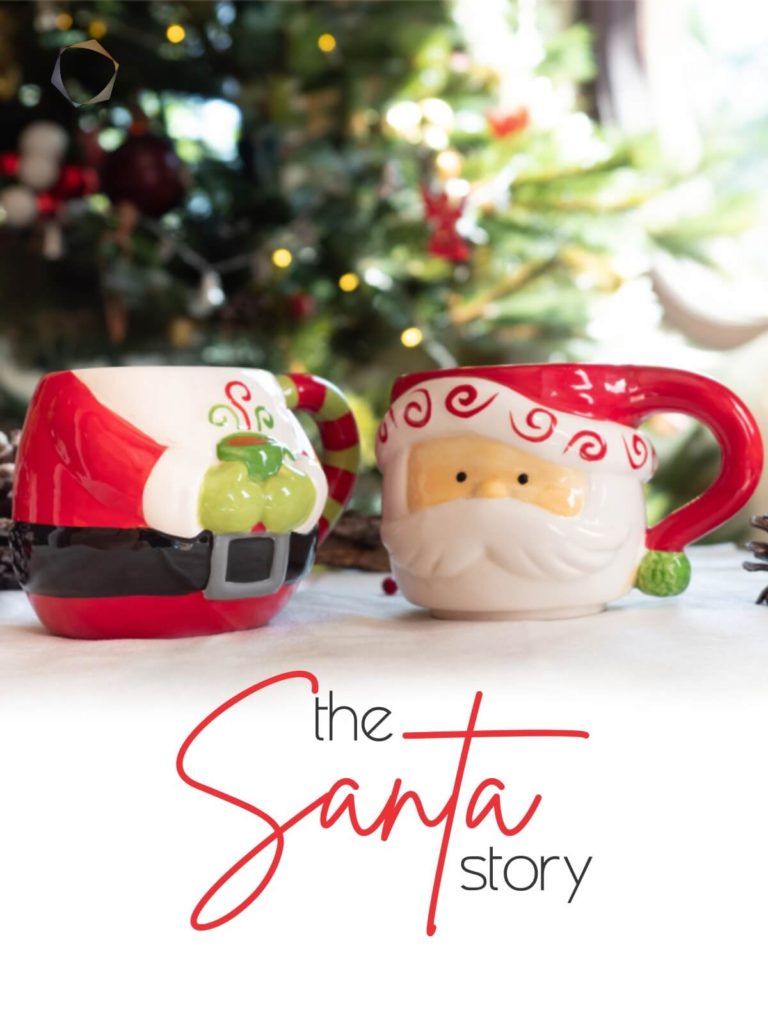Long before Brands came to realize the significance of emotion in their ads, Coca Cola was already doing it right by advocating emotion based marketing and branding. Rather than describe their product, their campaigns have always been based on emotion.
They never really made people think of how sweet or tasty or fizzy their drink was. Nor did they try to justify how unique it is.
Twinkling lights, holly berries, bells and carols jingling all the way, the sweet nutty aroma of freshly baked confections that came in today! all amidst the excitement in our studio as campaigns and slogans go out live! Yes it’s time for the holidays and the mood is that of fun and excitement here at Soidemer. And of course.. as we prepare for the days ahead, no discussion is complete without touching upon the story of Santa Claus and his role in building powerful associations for Brands around their Christmas strategies. While there is one brand that comes to our mind, as a holiday brand, we decided to highlight the facts and dispel some myths surrounding two of the world’s oldest brands to have built their advertisements around Santa.
So here’s to America’s favorite soda Coca Cola, a Brand that has been at the forefront of celebrations and happiness among people with its interestingly innovative and inspiring campaigns that are as refreshing as its product . And White Rock Beverages – producer of the world famous sparkling water, tonic water and ginger ale that was bold enough to have featured the Greek goddess ‘Psyche’, topless and naked from the waist up on each of their bottle labels back in the late 1800s.
So how did an otherwise highly sugarated, average soda go to becoming America’s most loved Soft Drink?
Right from their slogans to the messages their advertising communicates, Coke’s Brand Voice has always been linked to happiness conveying values of joy, community spirit and fun. The Brand has always been consistent in associating itself with a lifestyle that evokes positive vibes and celebration. All their marketing efforts were directed to make it evolve as a brand that could “make people happy”.
As a company that was quick to understand the value of emotion and adopt it in its branding efforts, Coca Cola succeeded in creating a powerful brand that has survived over the decades, making it a Brand with a truly refreshing spirit.
Now what does Coke have to do with Christmas? And what made this brand synonymous with the festive season?
With emotion playing a major role in Coke’s early strategies, it is no wonder that associating Coca Cola with the Christmas season is but a natural progression of its Brand strategy.
I am sure you have heard of the story of Santa Claus. Santa Claus was not always a jolly old fellow. He did not always have long white beard, and neither did he always wear a big red suit. But the Santa we know today, pretty much resembles a set idea in our minds and the way we would build our visuals and illustrations around. The colors of Red, White and black, inarguably spell out the costume and a happy jolly personality is what makes for an acceptable Santa that everyone wants to be around for their Christmas celebrations.
While coke may not have created Santa, they surely popularized the concept of a happy jolly old man we recognize as “Santa” dressed in a red and white costume with a big bold belt. Coca-Cola’s Santa Claus helped shape the character, personality and physical description of Santa for many more decades to come. Coke has managed to strategically associate its trademark colors and create its own brand awareness which in a way has given them credit for being the ones responsible for inventing the version of Santa Claus we know today.
Historical Facts
The story dates back to the early 1900s. White Rock Beverages were the first to use a Red and White Santa in 1915 to sell its mineral water. In 1923, Santa was used to promote their ginger Ale.
In 1920 Coca-Cola decided to feature Santa Claus, in their advertisements. The Santa Claus we all recognise and love — that big, jolly old man in the red suit and a white beard, didn’t always look that way. Prior to Coke’s campaigns, Santa was depicted as everything from a tall lean man to a spooky-looking elf.
In 1862, Harper’s Weekly featured Santa Claus (drawn by Civil War cartoonist Thomas Nast) as a small elflike figure who supported the Union. Nast continued with this version for 30 years while changing the color of Santa’s coat from tan to the bright red he’s known for today. The first Santa ads of Coke used a strict-looking Claus, similar to that of Thomas Nast. In 1930, artist Fred Mizen painted a department-store Santa in a crowd drinking a bottle of Coke.
In 1931, Coca-Cola commissioned Michigan-born illustrator Haddon Sundblom to develop advertising images featuring Santa himself, not a man dressed as Santa. The idea was to show a wholesome Santa who was both realistic and symbolic. D’Arcy Advertising Agency executive Archie Lee, was the creative chief who oversaw the Coca-Cola account and created such memorable slogans for the company as “the pause that refreshes’. He is credited as the inspiration behind the “classic” Santa Claus Coke print Ad.
For inspiration, Sundblom turned to Clement Clark Moore’s poem “A Visit From St. Nicholas” (commonly called “‘Twas the Night Before Christmas”) published in 1822. Moore’s description of St. Nick led to an image of a warm, friendly, pleasantly plump and human Santa. The image was designed to depict Santa with a white beard, rosy cheeks, and a round figure.
How did they do it?
Sundblom’s Santa debuted in 1931 in Coke ads in The Saturday Evening Post and appeared regularly in that magazine, as well as in Ladies Home Journal, National Geographic, The New Yorker and others.
The original oil paintings Sundblom created were adapted for Coca-Cola advertising in magazines and on store displays, billboards, posters, calendars and plush dolls. The images of Santa featured in the Coca-Cola advertisements were based on Sundblom’s original works.
These paintings are some of the most prized pieces in the art collection in the company’s archives department and have been on exhibit around the world, in famous locales including the Louvre in Paris, the Royal Ontario Museum in Toronto, the Museum of Science and Industry in Chicago, the Isetan Department Store in Tokyo, and the NK Department Store in Stockholm. Many of the original paintings can be seen on display at World of Coca-Cola in Atlanta, Ga.
The Fun Factor
Traditionally Milk and cookies were left out for Santa. While the traditions differ across several countries, Coca-Cola in its advertisements from 1931 to 1964, has depicted Santa delivering toys (and playing with them!), pausing to read a letter and enjoy a Coke, visiting with the children who stayed up to greet him, and raiding the refrigerators at a number of homes.
Real People
The children who appear with Santa in Sundblom’s paintings were based on Sundblom’s neighbors — two little girls. So he changed one to a boy in his paintings. The dog in Sundblom’s 1964 Santa Claus painting was actually a gray poodle belonging to the neighborhood florist. But Sundblom wanted the dog to stand out in the holiday scene, so he painted the animal with black fur.
Sundblom painted the initial image of Santa using his friend Lou Prentiss, a retired salesman as a live model. After Prentiss passed away, Sundblom used himself as a model, painting while looking into a mirror. It was only later that he began relying on photographs to create the image of St. Nick.
In 2001, the artwork from Sundblom’s 1963 painting was the basis for an animated TV commercial starring the Coca-Cola Santa. The ad was created by Academy Award-winning animator Alexandre Petrov.
A Popular Santa
Though the 1931 Sundblom version of Santa wasn’t the original version that people were used to seeing at that time, it soon became a symbolic image that was globally accepted and used. People wholeheartedly embraced this new idea of a playful, fun and welcoming Santa. Coca-Cola succeeded in their idea to create a realistic Santa that would become a symbol over time.
People loved the Coca-Cola Santa and it is interesting to note how they paid close attention to these advertisements. So much so that when anything changed, they would send letters to The Coca-Cola Company. One year, Santa’s large belt was backwards (perhaps because Sundblom was painting via a mirror). Another year, Santa Claus appeared without a wedding ring, causing fans to write asking what happened to Mrs. Claus.
The Impact
In the mid 90’s, Coca-Cola introduced the Image on Advertisements that ran on their trucks. In their most recent attempt back in 2006, to try something new, they were met with public outcry that led to the original trucks returning back.
With its vivid color combination of red, black and white, it was hard to miss the resemblance and draw an immediate association with the brand thus making it a powerful connection that has lived on for years on. Who knew that one of the most iconic campaigns of Coke would impact Christmas is such a big way.
The information in this article was derived from research findings including archived information from the Coca Cola company site.





